Shmøergh Hog concept & prototype
The core idea of a performance focused analog monosynth

I've always wanted an awesome analog synth sound in Dokkerman (my funk band). So much so that I convinced our keyboard player, Yamás, to buy a Moog Grandmother. Actually Yamás is more of a pianist than a keyboard player which came to light as soon as he tried to find and switch between usable sounds on the Grandmother.
To help him I tried to explain the inner workings of a synth: how the sound is generated via oscillators which are mixed and filtered, then sent to a voltage controlled amplifier which is then set by an envelope generator... I could see as the fog settled in his brain in like 10 seconds and I completely lost him.
This was the moment I realised that some (most?) musicians – even keyboard players – don't give a shit about the signal path, and more importantly: they don't think like this. Especially musicians in bands. They just want a great analog sound with a decent amount of sonic possibilities.
So what if we made a synth which is purposefully limited and hides the complexities and electrical engineering nerdiness of other pure analog synths. This is the core idea of the Hog.
A lot of synths solve this issue with presets. But how would we design a fully analog synth that has no presets and is ideal for people like Yamás?
Why no presets?
Sure, just shove in some presets lol. The problem of presets is that every single saveable parameter has to go through a microcontroller via ADCs and DACs. This makes the design exponentially more complex, and analog-to-digital / digital-to-analog conversions introduce errors which somewhat degrades that nice analog sound.
Concept
- Fully analog instrument. Why? Come on! You know why.
- No unwanted surprises—fuck up the sound only if you want to
- Make it relatively fast to get from one sound to another without presets
- Musician focused UI that shows what the control does with the sound, instead of their technically-correct-technical-tech-name
Interface
There's nothing unusal about how the Hog works on the inside. It follows a classic subtractive analog architecture: oscillators get mixed, they go through a filter which is shaped by an envelope and optionally modulated by various sources. What makes the synth unique is the interface and the simplicity of setting different sounds.
To achieve this simplicity, the sound parameters are controlled mostly by switches instead of knobs. This purposeful limitation makes it perfect for quickly tuning in sounds that are needed 90% of the time: fat basses, cutting leads, arpeggios but experimental drones and noises.

Sound sources
There are two oscillators in the Hog and they share a common octave switch. The main voice is always on, the second voice – which is called "Fat" – can be turned on to beef up the sound. It has a "Turbó™" switch that adds even more richness and overtones (it actually sets the Fat waveform between saw and square).
The Fat voice can be set 1 or 2 octaves up or down relative to the base note. Furthermore it can be detuned and it has its own output level setting. This makes the synth's sound source quite versatile and playful.
Filter
I've put Steiner-Parker diode filter in the Hog which is my all-time favorite, with a perfectly raw resonance. It's agressive, funky with just enough overdrive. I love it.
As usual the filter has the biggest overall sonic impact in the entire synth. I'm calling the resonance knob "Dirty", because besides setting the resonance of the filter it also sends the ADSR envelope to the cutoff which makes the sound funkier and funkier as it's being cranked up.
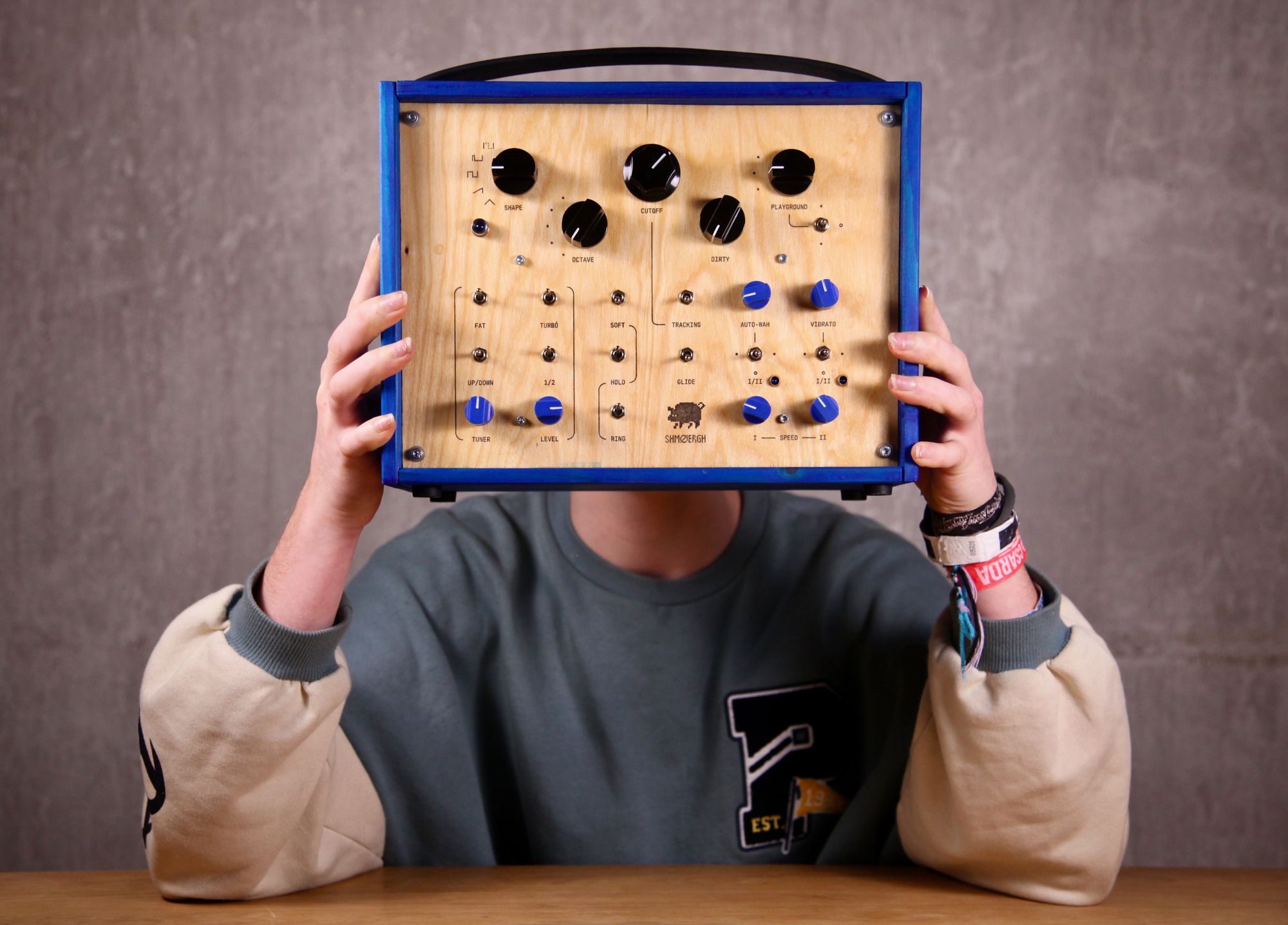
Custom envelope design
ADSR is probably the hardest concept in any synth: it mixes time (Attack, Decay, Release) and volumes (max level and Sustain) in a very technical way. If your brain is not wired to think comfortably in these combined dimensions then you'll have a hard time using it. And even if you can wrap your head around it, without presets it's fairly slow to go from one sound to another. So we abstracted the whole concept to three musically meaningful switches: "Soft" makes the beginning of the sound a little softer, "Hold" keeps the note until you press the key and "Ring" makes the end of the sound ring.
SOFT HOLD RING | ATTACK DECAY SUSTAIN RELEASE
---------------------------------------------------------
OFF OFF OFF | SHORT SHORT OFF SHORT
OFF OFF ON | SHORT LONG OFF SHORT
OFF ON OFF | SHORT SHORT ON SHORT
OFF ON ON | SHORT SHORT ON LONG
ON OFF OFF | LONG SHORT OFF SHORT
ON OFF ON | LONG LONG OFF SHORT
ON ON OFF | LONG SHORT ON SHORT
ON ON ON | LONG SHORT ON LONG
// Custom envelope design truth tableThe three switches allow 8 combinations which cover the sounds you'd need most of the time, especially playing live. Each positions are carefully tuned to make musical sense: for example if all switches are off, the sound is short and plucky while turning on "Ring" creates a piano-like envelope: decays long if you keep the key pressed while dies quickly if you hit it fast.
Playground
The Playground switch routes the second oscillator to various modulation destinations, and setting the oscillator's pitch via the Tune knob alters the modulation. Additionally there are two LFOs — all of these can be used together to generate surprising sounds, noises or some random sonic mess. Due to the switch-based interface it's literally a matter of seconds to get back to a clean sound.
Enclosure
I designed and built the circuit and the case of this synth over the last year. This blue one here is the second iteration which ended up in a wooden IKEA toolbox. It resembles an old multimeter or a vintage radio. It's kinda cool to see how it loses its saturation over time.
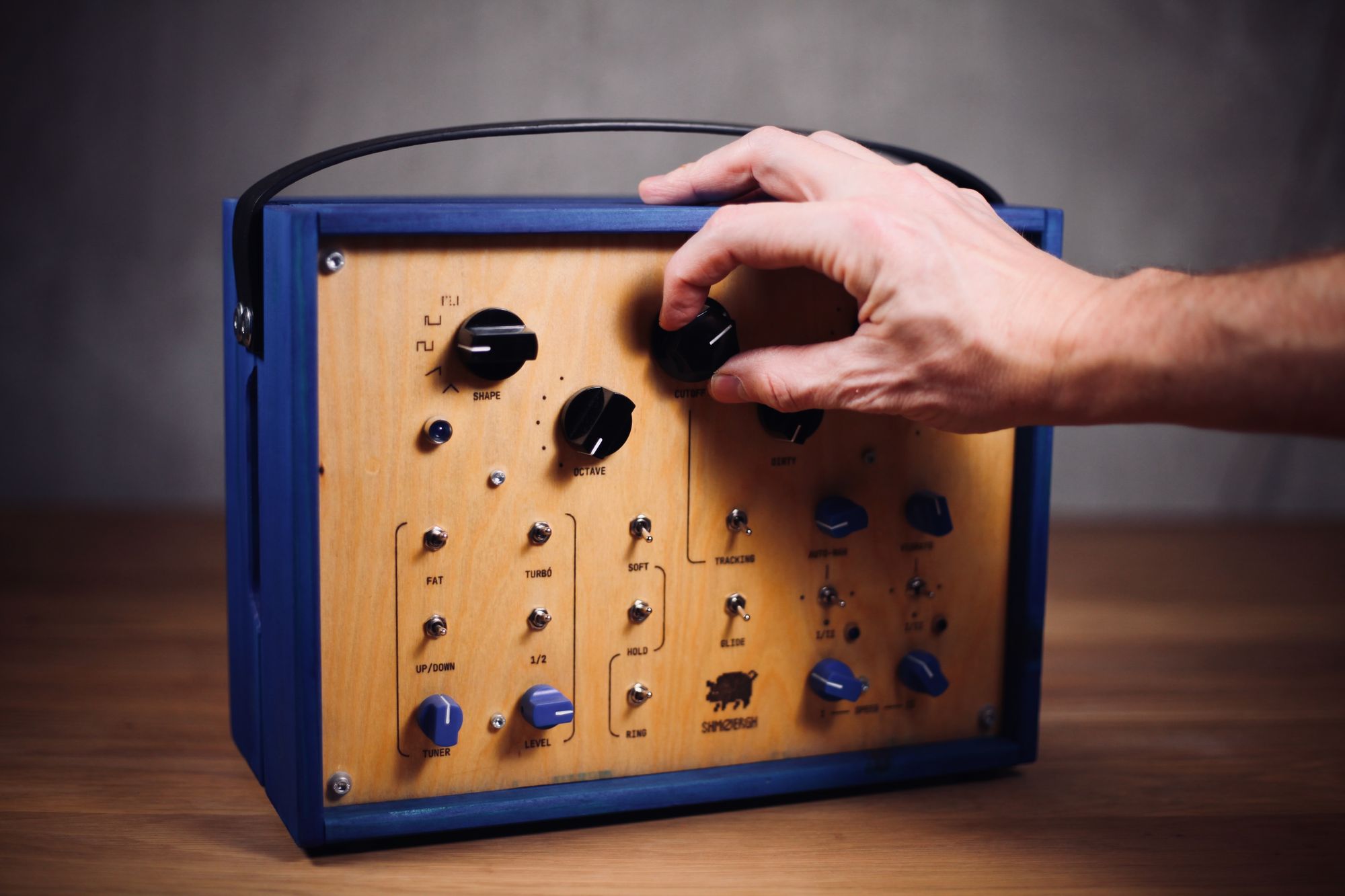
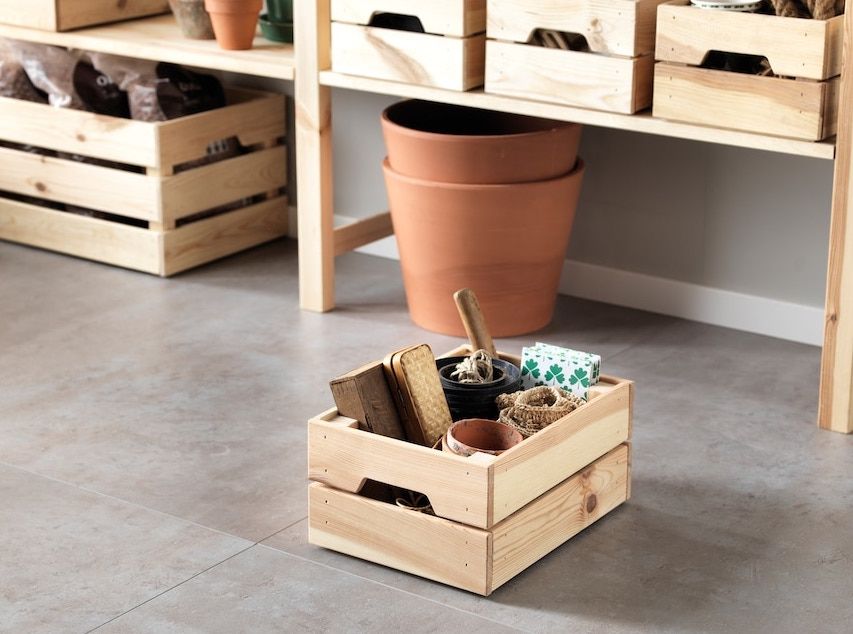
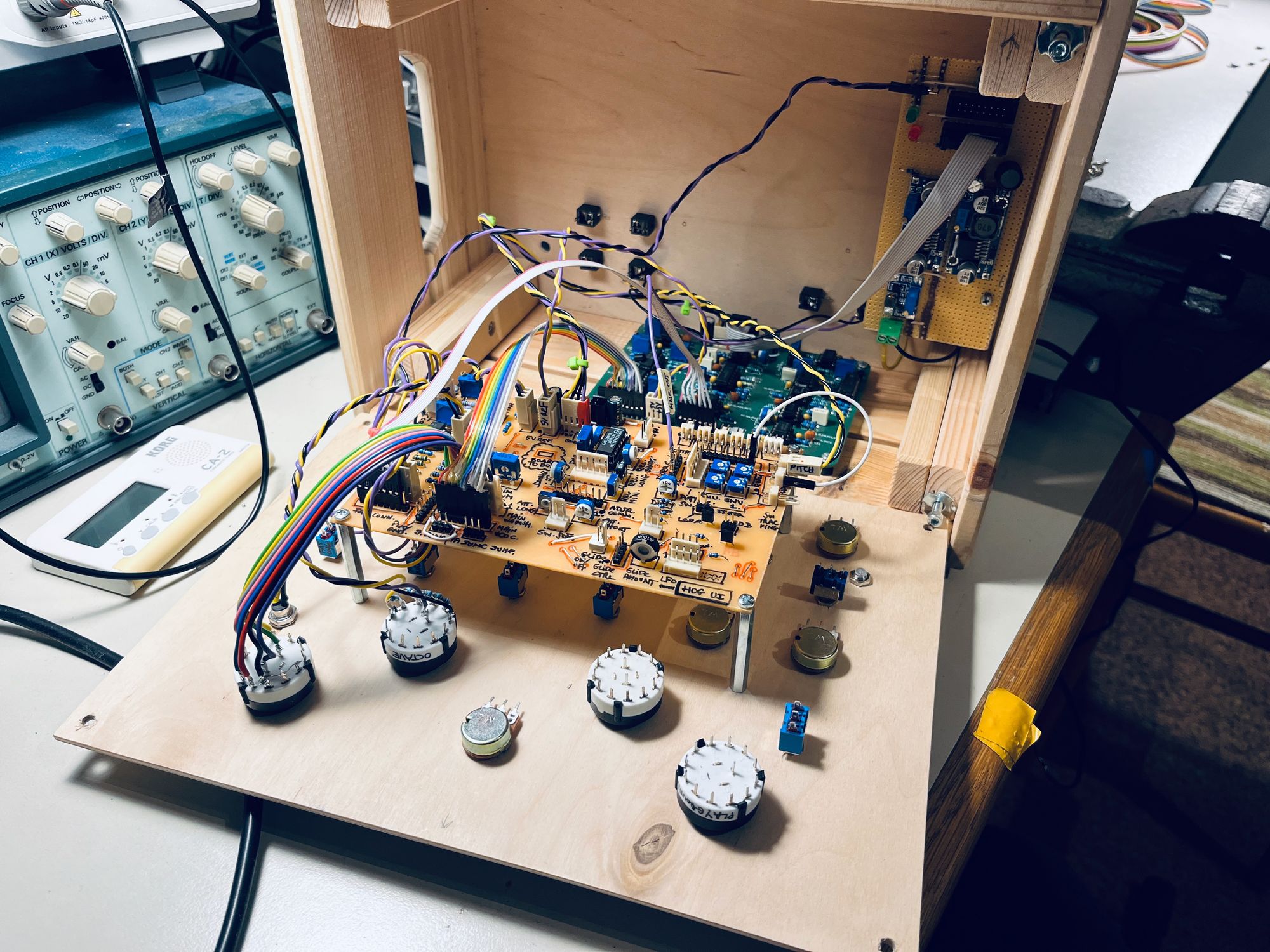
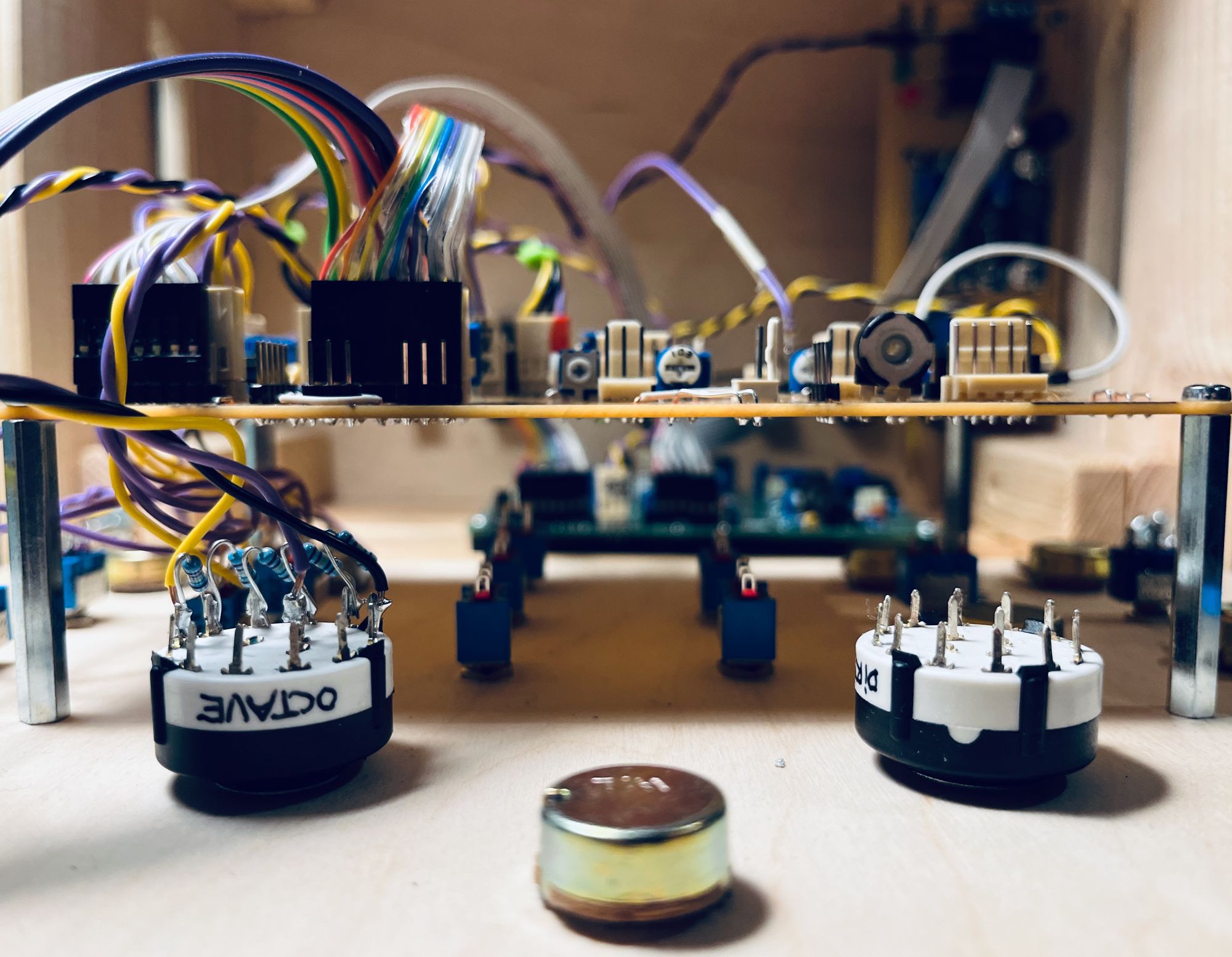
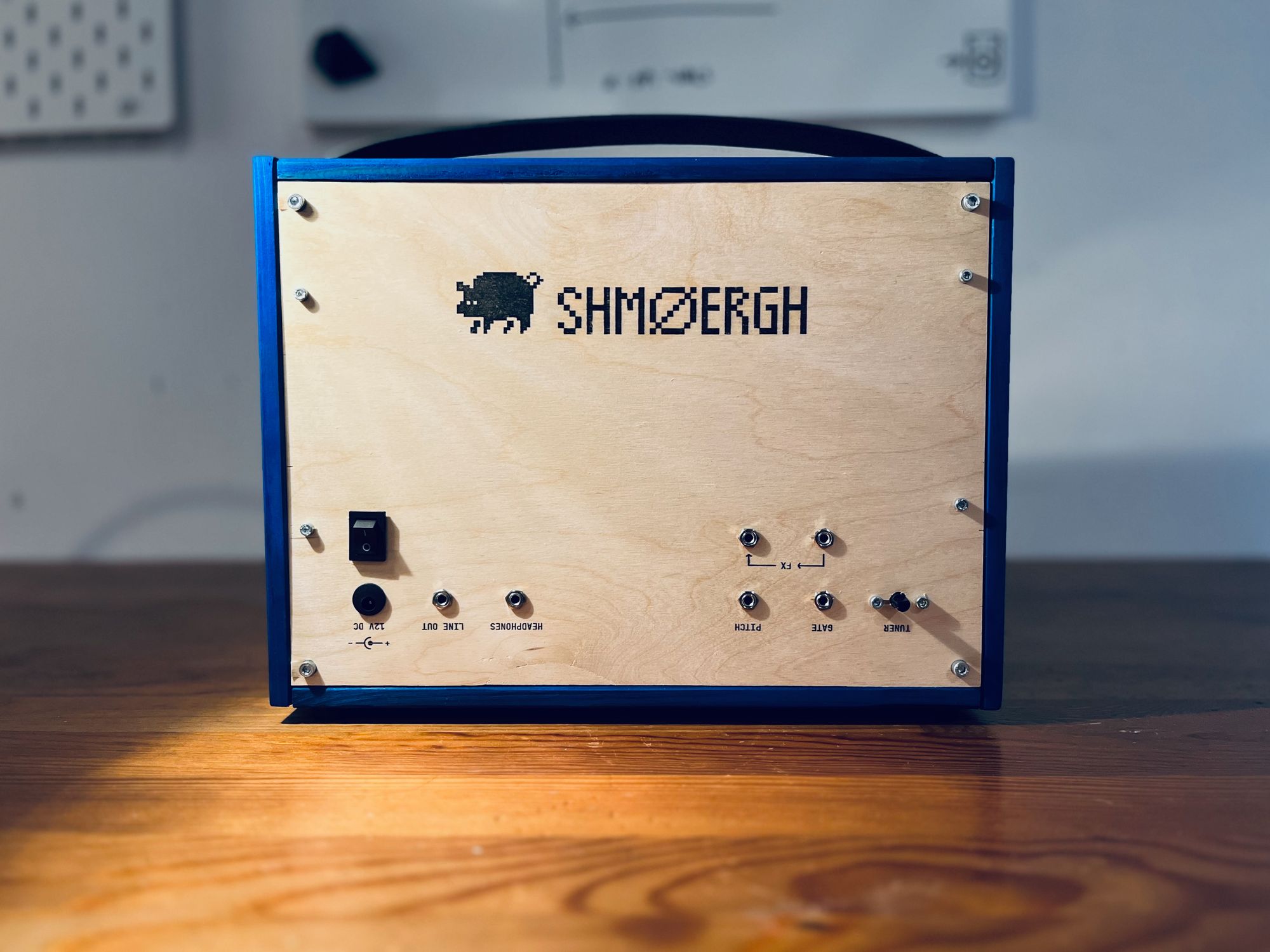
Synth in a KNAGGLIG toolbox by IKEA (top-left photo from ikea.com)
Samples
Earlier versions
I used an IKEA flowerpot as the basis for the first proof of concept. Its size is perfect and it's all metal so it's an amazing shield for sensitive circuits like the diode filter.
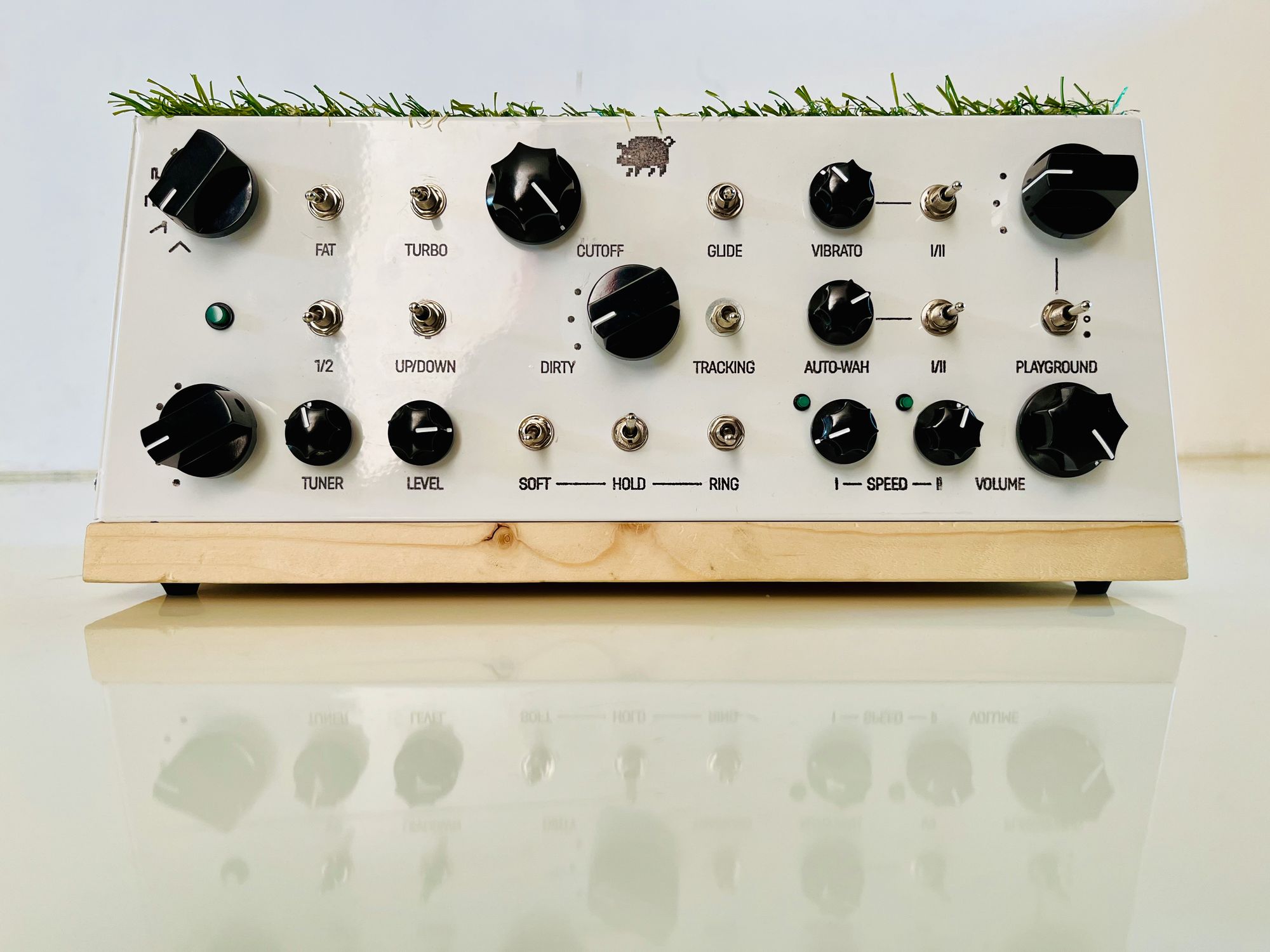
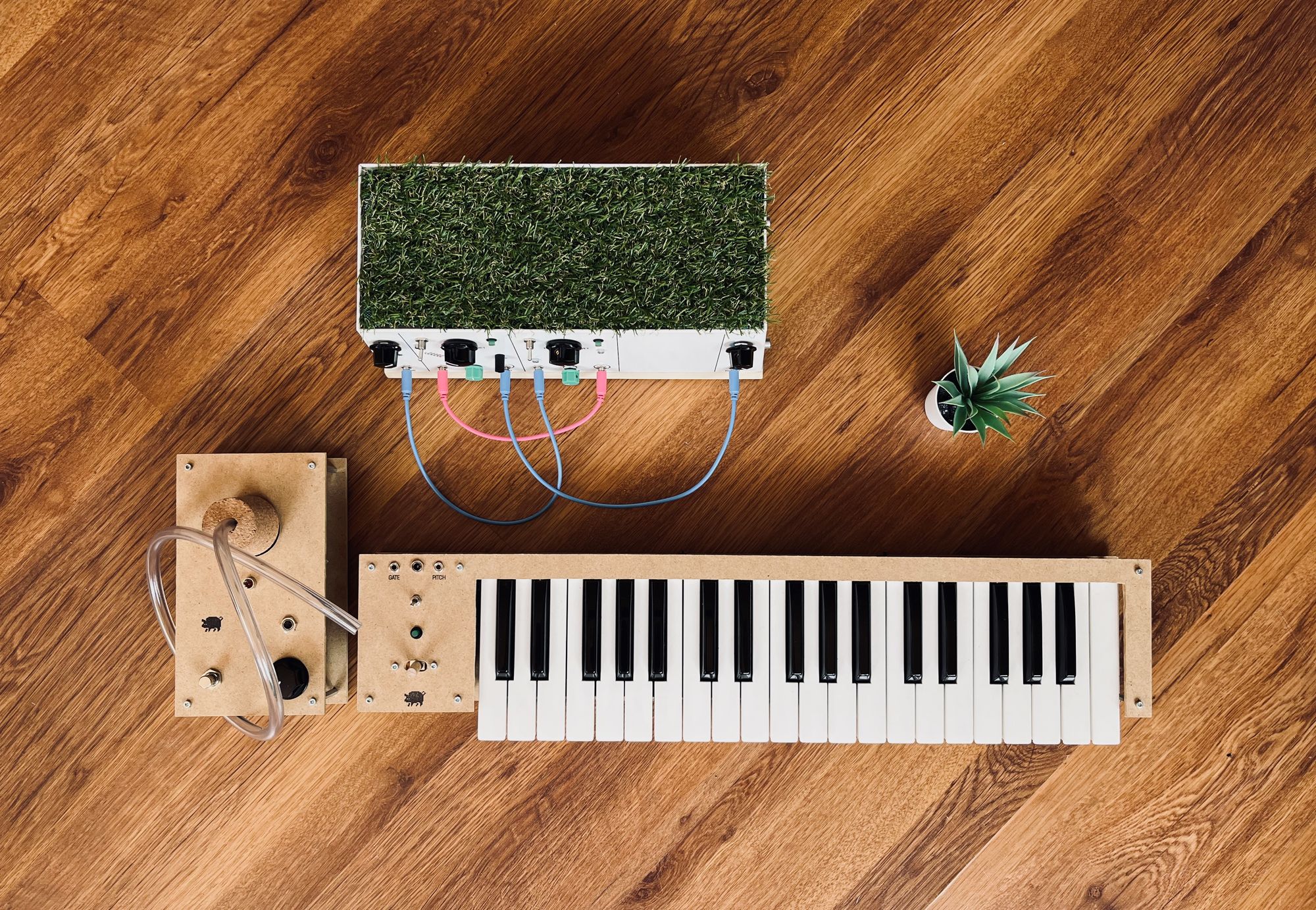
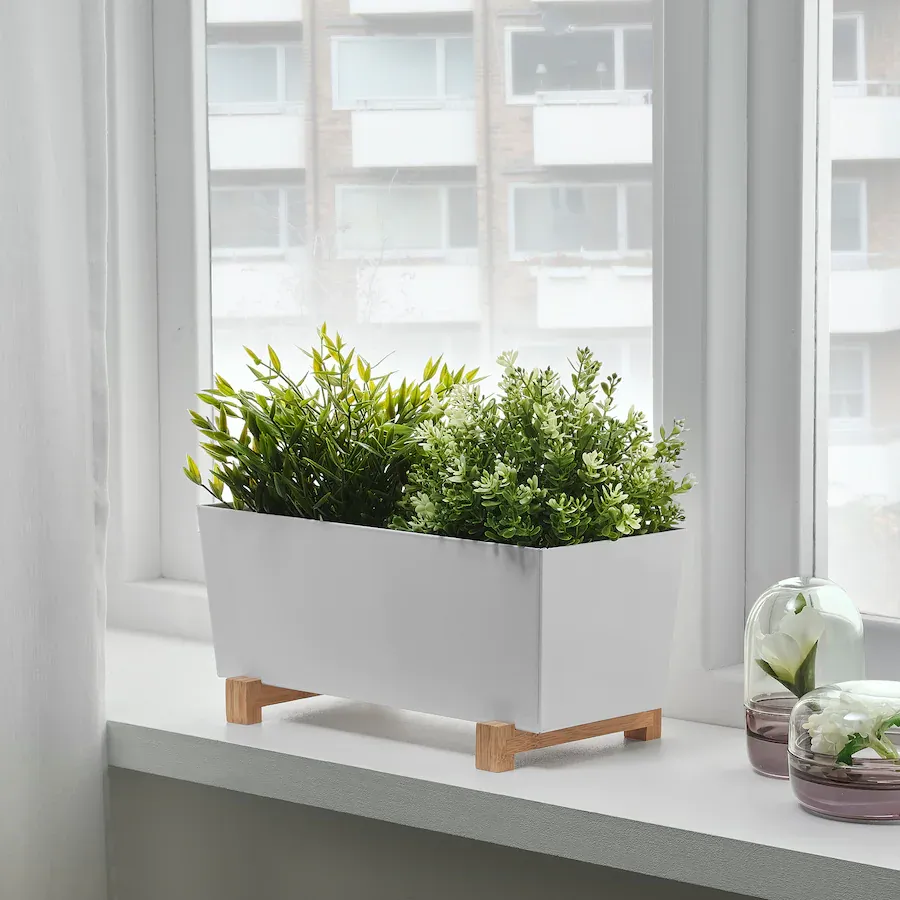
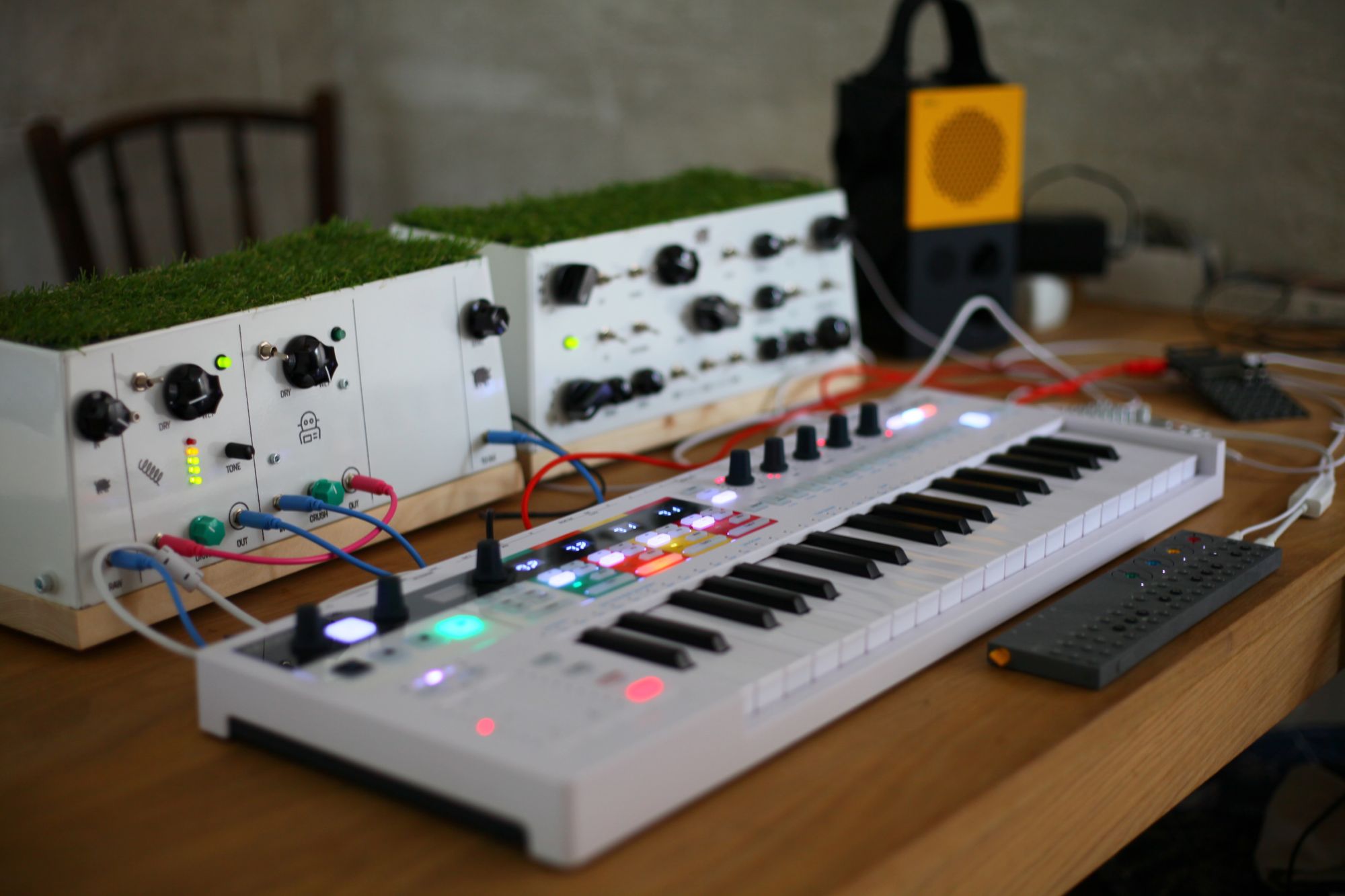
First prototype in a BITTERGURKA flowerpot by IKEA (bottom-left photo from ikea.com)
My kids took this pic. It was a fun photoshoot.
